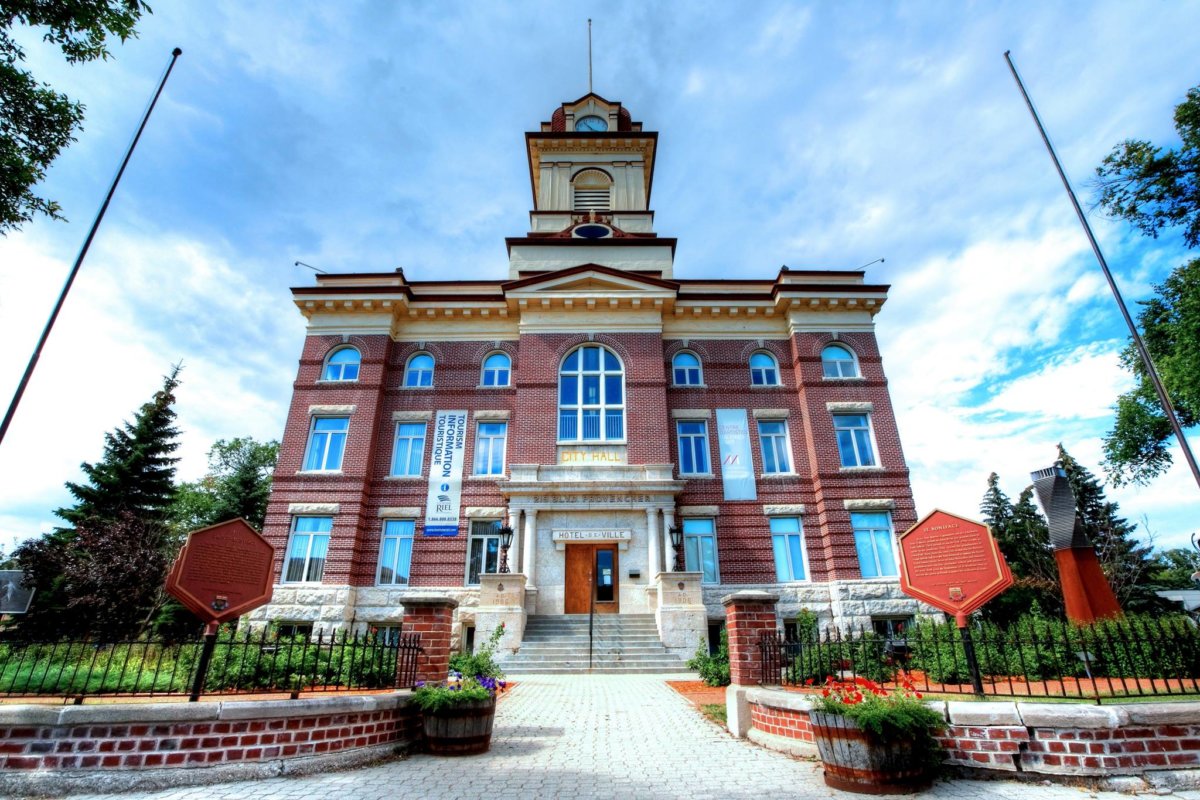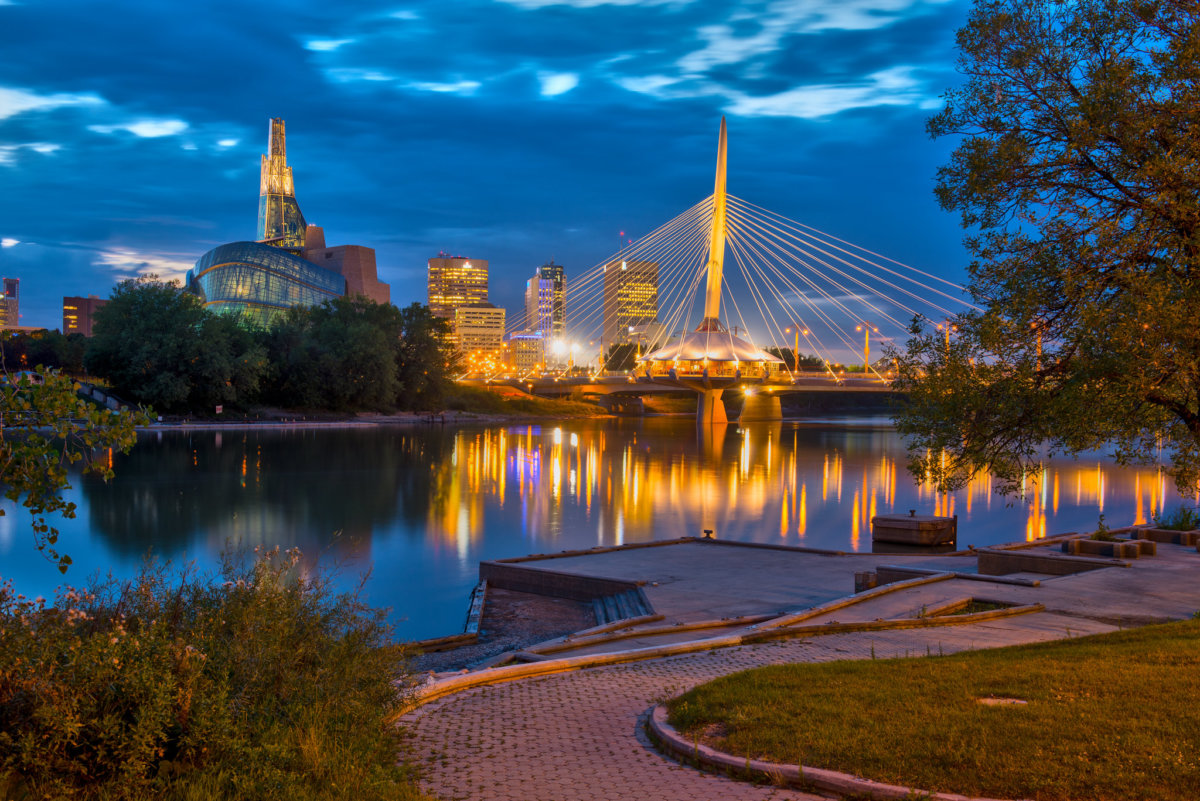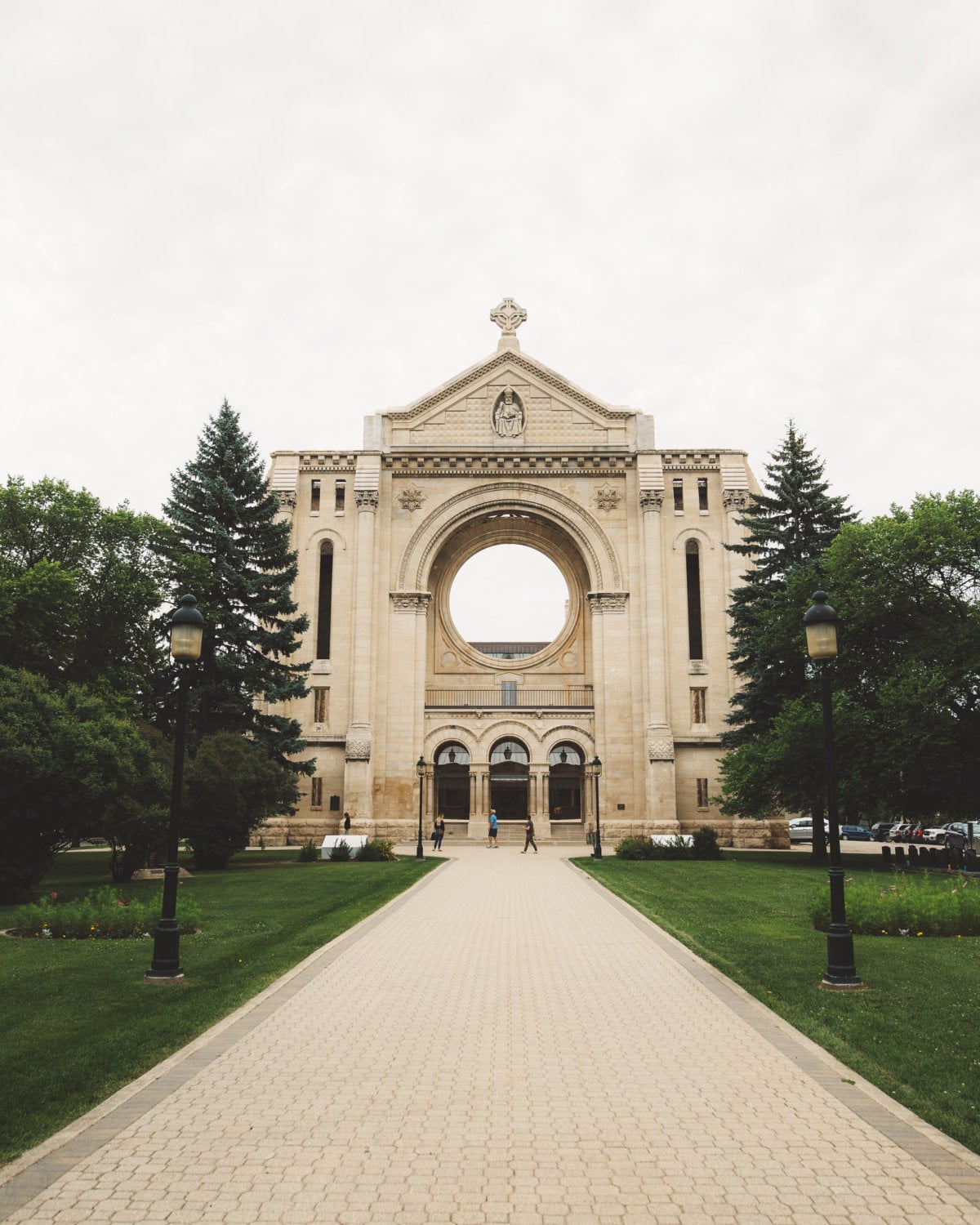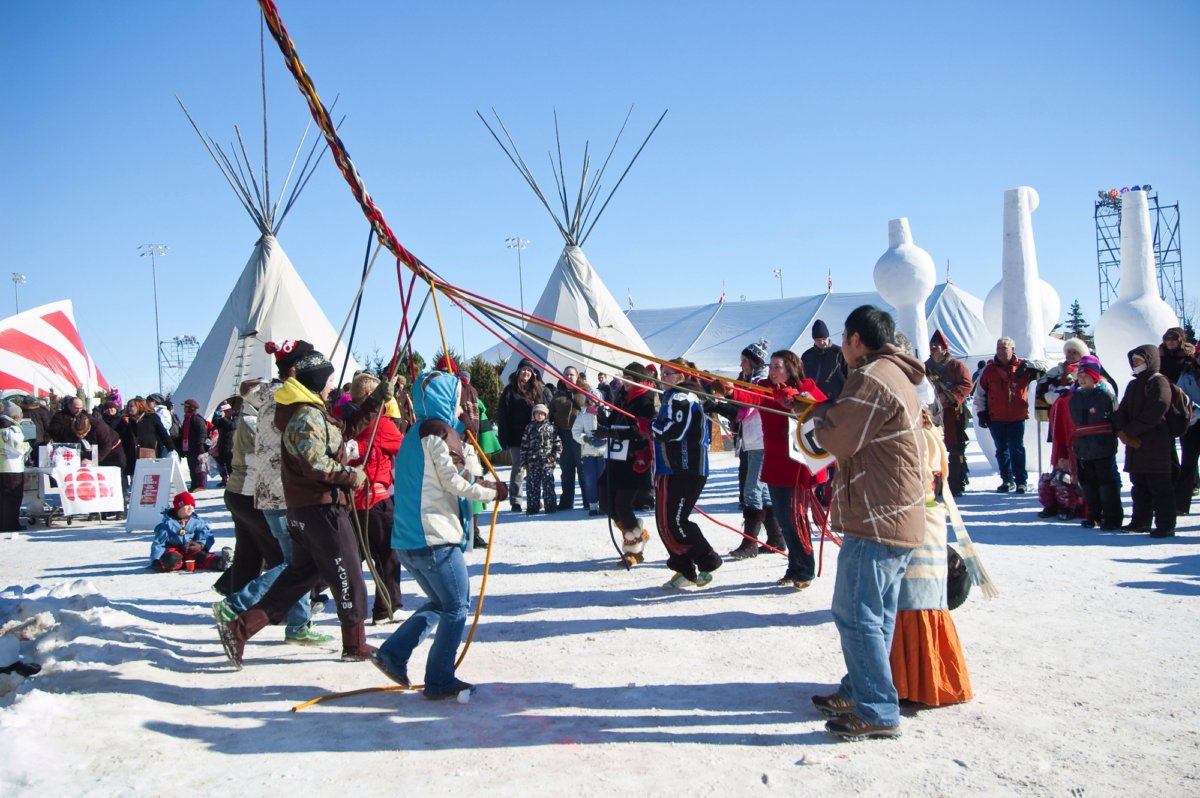Saint Boniface is the home of the largest francophone community in Western Canada. The region is well known as being in the centre of the struggle to maintain the language and cultural identity of the French and Métis inhabitants. It is a place with deep roots in history with more than 35 designated historical sites. Although a part of Winnipeg, this region with its unique architectural heritage, has an identity of its own which becomes evident as soon as you cross the Esplanade Riel. Here are 15 reasons why you should not miss this part of Winnipeg.
You might like:
50 Outdoor Adventures in Manitoba
1. St. Boniface City Hall
St. Boniface City Hall was the home of the St. Boniface’s civic government prior to the amalgamation of St. Boniface with the City of Winnipeg in 1972. Constructed in 1906, the red brick building is engraved with the words “Hôtel de Ville”, French for “City Hall”. Other interesting features are the double staircase, pressed-tin ceilings, and painted wood trim.
Today it is the home of the Tourisme Riel Information Center. The centre’s 40-minute documentary ‘At the Heart of Manitoba’s Francophone Community’ can be the starting point of your St. Boniface visit. The Centre also conducts various walking tours which are very popular. Details
Also housed here is La Maison des artistes visuels francophones, an art gallery that displays the works of Francophone visual artists. Details
Where: 219 Provencher Blvd; (204) 233-8343

Tourisme Riel
2. Centre Culturel Franco-Manitobain
The center of french cultural life, CCFM hosts many live entertainments and also has an art gallery, restaurant, and concert halls. Details
Where: 340 Provencher Blvd.; (204) 233-8972
3. Saint-Boniface Cathedral
Saint-Boniface Cathedral is a municipally-designated historic site and a Roman Catholic basilica known as the ‘Mother Church of Western Canada’. The present church is a reconstructed church – the fifth one built here since 1818. The new building combine newer elements within the ruined facade of the older fire-damaged Cathedral. This unique architectural construction attracts thousands of visitors to the site. Details
Where: 190 de la Cathédrale Avenue; (204) 233-7304
4. The Grave of Louis Riel
Visit the grave of Louis Riel leader of the Red River Rebellion of 1869. He also played a critical role in founding the province of Manitoba. In July and August, the Museum conduct an outdoor guided tour of the cemetery named ‘In Riel’s Footsteps’. Details
Where: Saint-Boniface Cathedral Cemetery
5. La Maison Gabrielle-Roy
Book lovers would love visiting this place. Featured prominently in books of Gabrielle Roy, a world-renowned French-Canadian author, is a small house located in Deschambault Street. The house was the birthplace of the author as well as her home for 28 years. This restored residence is now a museum, La Maison Gabrielle-Roy where visitors can explore the early life of Gabrielle Roy. Details
Where: 375 Deschambault Street; 204-231-3853
6. Le Musée de Saint-Boniface Museum
Discover local Francophone and Métis heritage at the Saint-Boniface Museum. This must-visit museum, located in the former Grey Nuns’ convent, offers various curated exhibits and programming. The museum is also the oldest remaining structure in the city of Winnipeg and the largest oak log building in North America.
Before you exit be sure to check out their gift shop, La Belle Boutique Blanche. The shop offers a variety of items that pertains to Manitoba’s fur trading past and culture as well as locally made toys. Details
Where: 494 Tache Avenue; 204–237-4500 ext.400
7. Constance Popp Chocolates
No visit to Saint B0niface will be complete without visiting this premier artisan chocolatier. Her fares speak for her, so be sure not to miss this award-winning Made-in-Manitoba decadent chocolate creations. Details
Where: 180 Provencher Blvd; 204-897-0689
8. Le Garage Café
Head over here to enjoy some of the best poutines in the city. Located in the heart of Saint Boniface, the Cafe is a hot spot for people who want to enjoy great food and music. Details
Where: 166 Provencher Blvd; 204-237-0737
9. Fort Gibraltar
Let costumed characters transport you to the fur trade era at this reproduced Fort in summer. The Original Fort was built by the North-West Company in 1810. In winter, this is the principal site of the Festival du Voyageur. Details
Where: 866 Saint-Joseph Street; (204) 237-7692
Fort Gibraltar is also the home of Western Canada’s largest winter festival, Festival du Voyageur. This 10-day winter festival held annually in February showcases francophone culture, musical entertainment, traditional cuisines as well as lots of fun outdoor activities for the family. Details
10. Esplanade Riel
This cable-stayed architectural marvel is one of the most recognized visual symbols in Winnipeg. Named after the Metis leader, Louis Riel, the bridge links Winnipeg’s French quarter to the heart of downtown Winnipeg. Details
11. Cercle Molière
See performances by Franco-Manitoban actors and playwrights in one of Canada’s oldest theater company. Details
Where: 340 Provencher Blvd; 204-233-8053
12. Precious Blood Parish
Designed by renowned Franco-Manitoban architect Étienne Gaboury, the church has a unique spiral design that represents the skyward movement of the church community towards God. The Metis culture of the community inspired the architect to use a subtle tipi shape. Details
Where: 200 Kenny street; (204) 233-2874
13. Riel-House National Historic Site
Revisit the traditional Métis way of life. The site pays tribute to Louis Riel, Founding Father of Manitoba and renowned Métis leader. The site has been restored to how it was in 1886, six months after Riel’s execution for his role in the Northwest Resistance. Here, learn how Manitoba came to be a province. Details
Where: 330, ch. River Rd; 204-257-1783
14. Resto Gare Bistro & Train Bar
Le Resto Gare is an old train station of St. Boniface. This is the place where immigrants first landed in Manitoba. Until it closed in the 1950s, it was a busy place. In 1969, it re-opened as a Continental cuisine restaurant specializing in French cuisine. The bistro still retains historic elements that speak of the building’s train station past. Details
Where: 630 Des Meurons St.; (204) 237-7072

Resto Gare
15. Royal Canadian Mint
Visit this facility that produces all the coins used daily in Canada and in over 75 countries around the world. Details
Where: 520 Lagimodière Blvd.; 204-983-6429





